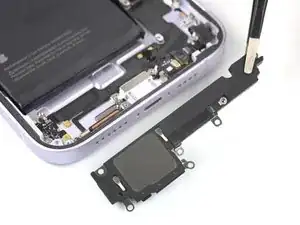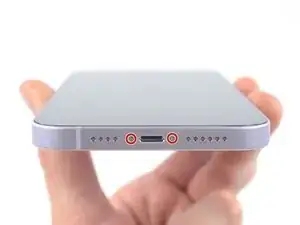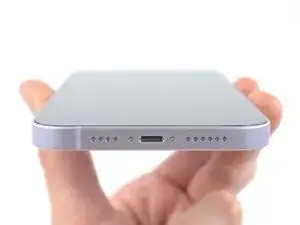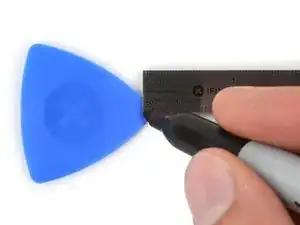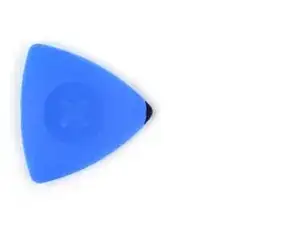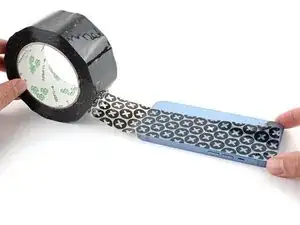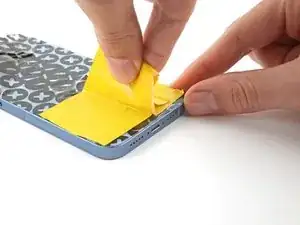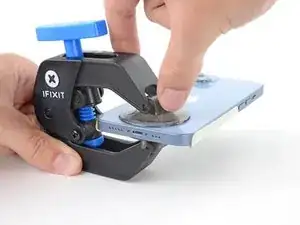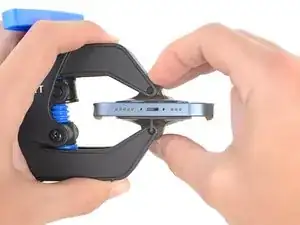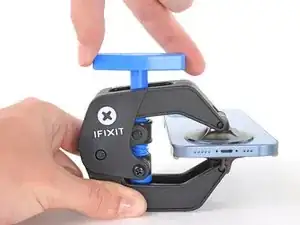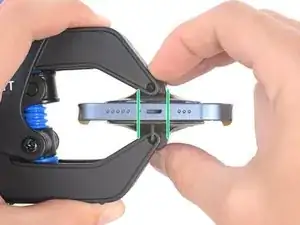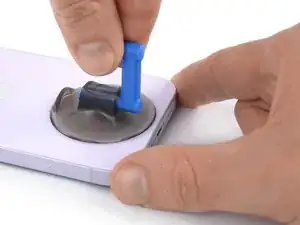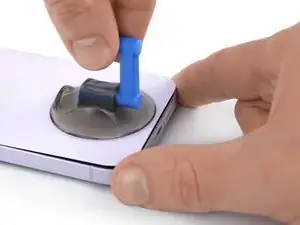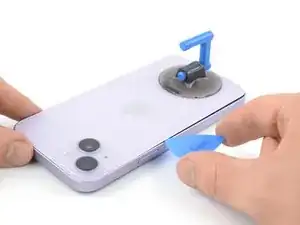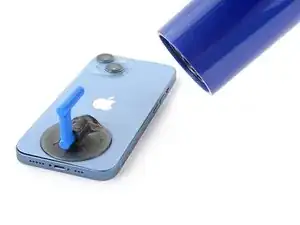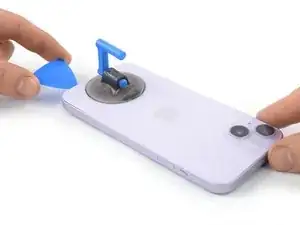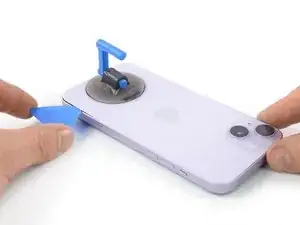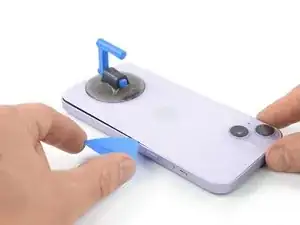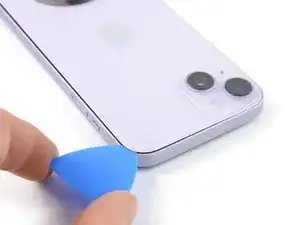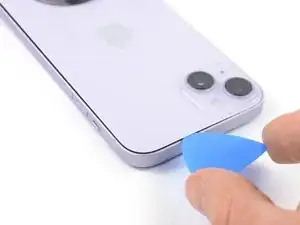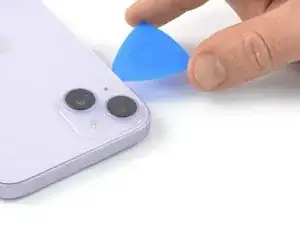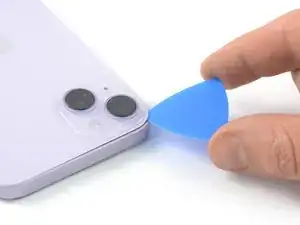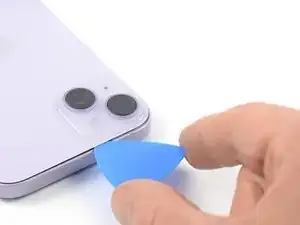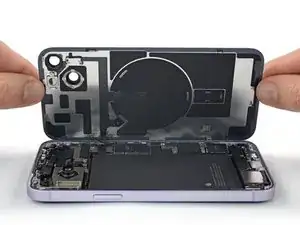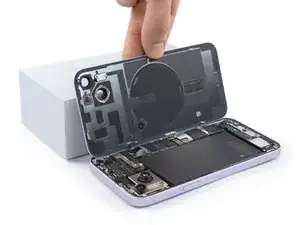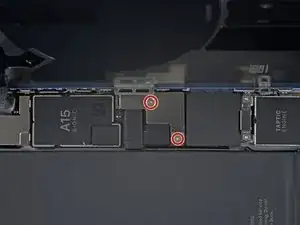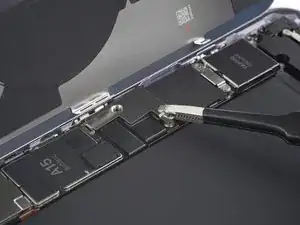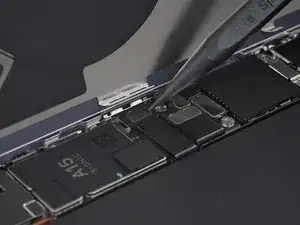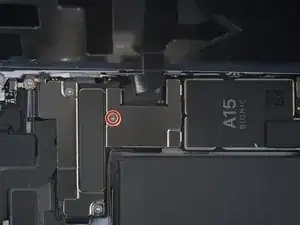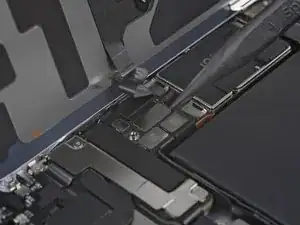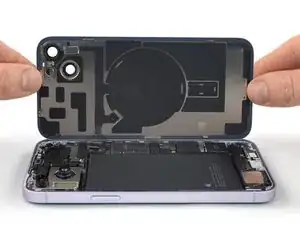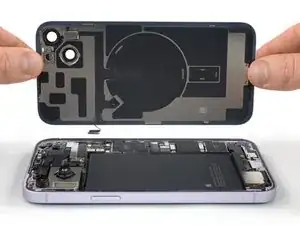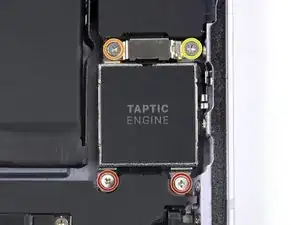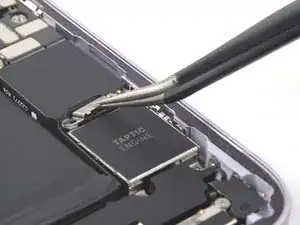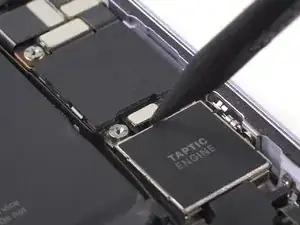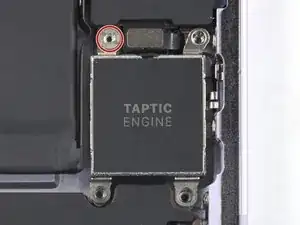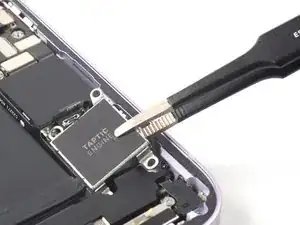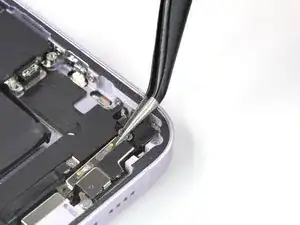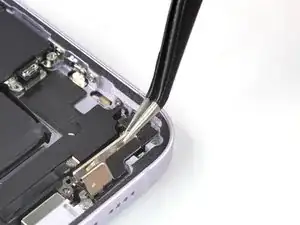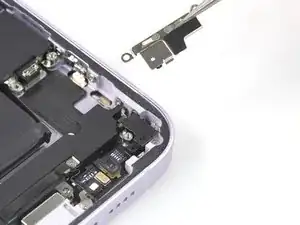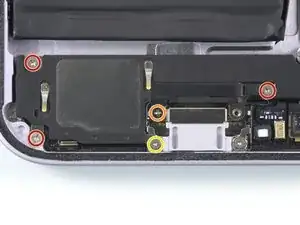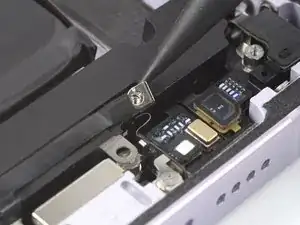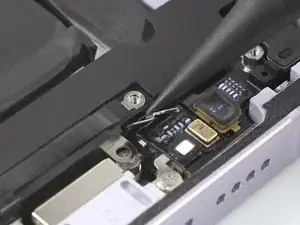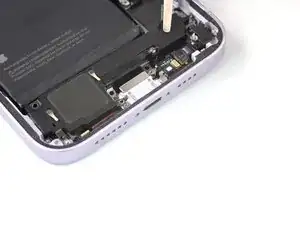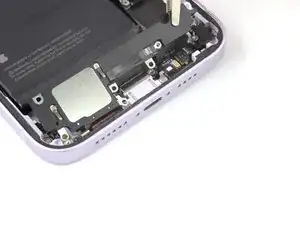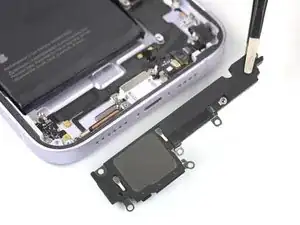Introduction
Use this guide to remove and replace the loudspeaker in your iPhone 14 Plus.
This guide was created using the A2886 (international) model. If you're fixing a different iPhone 14 Plus model, there may be some visual discrepancies, but the procedure should be the same.
For your safety, discharge the battery below 25% before disassembling your device. This reduces the risk of fire if the battery is accidentally damaged during the repair. If your battery is swollen, take appropriate precautions.
You’ll need replacement adhesive to reattach the rear glass when reassembling the device. Your device will function normally, but will most likely lose its IP (Ingress Protection) rating.
Tools
Parts
-
-
Power off your iPhone before beginning disassembly.
-
Remove the two 6.8 mm-long pentalobe P2 screws at the bottom edge of the iPhone.
-
-
-
Lay overlapping strips of clear packing tape over the iPhone's rear glass until the whole face is covered.
-
If you can't get the suction cup to stick in the next few steps, fold a strong piece of tape (such as duct tape) into a handle and lift the rear glass with that instead.
-
-
-
Pull the blue handle backwards to unlock the Anti-Clamp's arms.
-
Slide the arms over either the left or right edge of your iPhone.
-
Position the suction cups near the bottom edge of the iPhone—one on the front, and one on the back.
-
Squeeze the cups together to apply suction to the desired area.
-
-
-
Pull the blue handle forwards to lock the arms.
-
Turn the handle clockwise 360 degrees or until the cups start to stretch.
-
Make sure the suction cups remain aligned with each other. If they begin to slip out of alignment, loosen the suction cups slightly and realign the arms.
-
-
-
Support your iPhone on something sturdy such as a hardcover book so it rests hands-free and parallel to the ground; this makes it easier to work with in the following steps.
-
Use a hair dryer to heat along the bottom edge of the iPhone. The glass should feel slightly too hot to touch.
-
Wait one minute to give the adhesive a chance to release and present an opening gap.
-
Insert an opening pick under the rear glass when the Anti-Clamp creates a large enough gap.
-
Skip the next two steps.
-
-
-
Use a hair dryer or a heat gun to heat the bottom edge of the iPhone for 90 seconds or until the rear glass is slightly too hot to touch.
-
-
-
Apply a suction handle to the bottom edge of the rear glass, while avoiding the very edge of the glass.
-
Pull up on the suction cup with firm, constant pressure to create a slight gap between the rear glass and the frame.
-
Insert an opening pick into the gap.
-
-
-
Use a hair dryer to heat the left edge of the iPhone for 90 seconds or until the rear glass is slightly too hot to touch.
-
-
-
Slide the opening pick around the lower left corner and up the left edge of the iPhone, slicing through the adhesive holding the rear glass in place.
-
-
-
Use a hair dryer to heat the right edge of the iPhone (the edge with the power button) for 90 seconds or until the rear glass is slightly too hot to touch.
-
-
-
Re-insert your pick at the bottom edge of the iPhone, and slide it up the right side to continue separating the adhesive.
-
-
-
Use a hair dryer to heat the top edge of the iPhone for 90 seconds or until the rear glass is slightly too hot to touch.
-
-
-
Insert your pick underneath the top right edge of the phone. Slide it around the top-right corner and halfway across the top edge.
-
-
-
Insert your pick underneath the top-left edge of the phone. Slide it around the top-left corner and halfway across the top edge.
-
-
-
Remove your suction handle from the rear glass.
-
Slowly open your iPhone by swinging the rear glass up from the left side, like the back cover of a book.
-
Lean the rear glass against something to keep it propped up while you're working on the phone.
-
If you don't have anything at hand to lean the rear glass against, your suction handle can do the trick.
-
-
-
Use a Y000 screwdriver to remove the two 1.3 mm-long screws securing the battery connector cover.
-
-
-
Use the pointed end of a spudger to disconnect the battery cable by prying the connector straight up from its socket.
-
Bend the connector slightly away from the logic board to prevent it from accidentally making contact with the socket and providing power to the phone during your repair.
-
-
-
Use a Y000 screwdriver to remove the single 1.0 mm-long screw securing the charging coil connector cover.
-
-
-
Use the pointed end of a spudger to disconnect the charging coil cable by prying the connector straight up from its socket.
-
-
-
Use a Phillips screwdriver to remove the four screws securing the Taptic Engine.
-
Two 1.7 mm-long screws
-
One 1.4 mm-long screw
-
One 1.8 mm-long screw
-
-
-
Use the pointed end of a spudger to disconnect the Taptic Engine by prying the connector straight up from its socket.
-
-
-
Use a Phillips screwdriver to remove the two screws securing the metal bracket.
-
One 1.4 mm long screw.
-
One 1.5 mm long screw.
-
-
-
Use a pair of tweezers to carefully pull the metal bracket in an upright position to separate its clips from the frame.
-
Remove the metal bracket.
-
-
-
Remove the five screws securing the loudspeaker.
-
Use a Phillips screwdriver to remove the three 1.5 mm-long screws.
-
Use a Phillips screwdriver to remove the 1.9 mm-long screw.
-
Use a Y000 screwdriver to remove the 1.2 mm-long screw.
-
-
-
Use the pointed end of a spudger to carefully fold the grounding cable positioned at the middle of the loudspeaker to the side.
-
Compare your new replacement part to the original part—you may need to transfer remaining components or remove adhesive backings from the new part before installing.
To reassemble your device, follow the above steps in reverse order.
Take your e-waste to an R2 or e-Stewards certified recycler.
Repair didn’t go as planned? Try some basic troubleshooting, or ask our Answers community for help.
